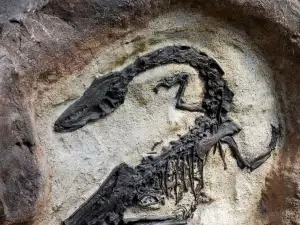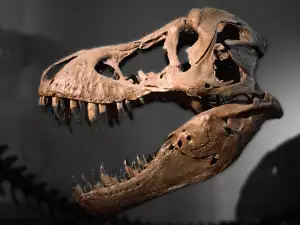A new paleontological find brings science one step closer to the mysterious world of the dinosaurs. At a dig site in Southern Africa, an international team of scientists has discovered a dinosaur footprint measuring 22 1/2″ (57 cm) by 19 3/4″ (50 cm), belonging to a previously unknown species.
The unique footprint was found in the Maseru region of Lesotho. It belonged to a gigantic three-toed creature, which according to researchers was a carnivore. The evidence suggests that the mysterious giant was a relative of the infamous T-rex.
According to paleontologists, the three-toed animal inhabited the planet 200 million years ago. According to their calculations, it was about 10 ft (3 m) tall, with a body stretching to about 30 ft (9 m) long. The newly discovered species belongs to the so-called Mega-Carnivore group and has been named Kayentapus ambrokholohali by its discoverers.
The discovery of the footprint is a crucial paleontological find, one of the most impressive ever to be unearthed in Africa, say the experts in their scientific report.

The find is also significant for another reason. It's the first proof of its kind that a gigantic bloodthirsty dinosaur lived in Southern Africa an entire 100 million years before the appearance of Tyrannosaurus Rex. Further, it dates to the early Jurassic - a period in which scientists previously thought there were much less dinosaurs on Earth.







